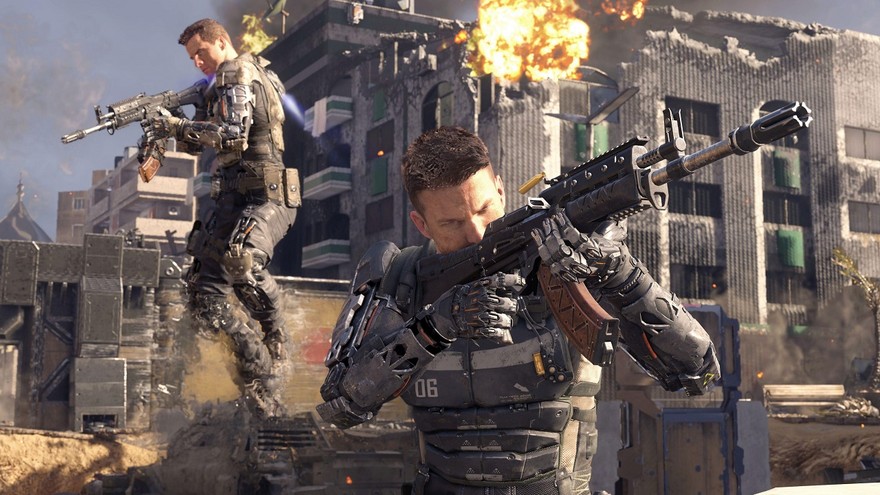War, as we are often reminded, is not a game.
Related: war, as we are even more often reminded, is the most repeatedly engaged-in and marketable game on Earth.
Videogames are for the most part a commercial product. In order to be viable they have to appeal to some segment of the population for whom they are intended. War is for the most part not a commercial product and doesn’t need to appeal to anyone at all. Real war, in fact, seems intractably self-sustaining, even in the face of its participants, architects, and observers generally being pretty bummed out about it. So what’s a videogame developer, whose job involves rendering humanity’s greatest bane not just appealing but fun, to do? Well, first, you need to introduce a concept that is inimical to the structure of actual war: fairness. I don’t mean fairness in a moral sense, but in a brutally practical one.
In actual war, gaining an unfair advantage over your enemy is crucial to strategy because if you lose, you, like, actually die. In actual war, an unfair fight is the only kind you ever want to be in, but even then you can’t guarantee you’ll win or that you won’t take unacceptable damage. The randomness and chaos of actual war zones make wars difficult to plan. to understate the case. In gaming, on the other hand, an unfair fight cheapens the experience even for the player who wins. War is not a game, but war games have to be. To bridge the gap between the inherent unpredictability of actual war and the sense of order and control required by a well-balanced war game we’ve developed matchmaking systems of increasing complexity, spreading out nickel-plated branches into seemingly endless trees of power-ups, loadouts, and armor abilities. In the last decade or so, games have dedicated a truly obscene amount of time and resources to figuring out how to give all of their players the tools to feel like an expert. But you really only need to spend about ten minutes in the ulcer-inducing death spiral of most modern multiplayer war games to know that the results of these efforts at leveling have been, at best, spotty.
So believe me when I tell you I understand that it would be a big deal to say that Halo 5’s Warzone mode may have actually solved this motherfucker, or at least taken an innovative new leap in the quest to stay ahead of the seemingly inevitable trend toward imbalance in multiplayer environments. And they did it not by introducing a new loadout or rule set, but by stripping away several existing ones. In essence, they made chaff. During the Second World War scientists from both the United States and Germany figured out, nearly simultaneously, that if they released clouds of aluminum strips into the air they could flummox enemy radar by making it appear that a single target, usually a plane, was actually dozens or hundreds of smaller targets spread out over a large area. They made war safer for their boys by making it more chaotic for the steely-eyed aces trying to send them screaming down from the sky.

Warzone is a flaming clusterfuck, a charnel ground with online opponents, Covenant and Forerunner troops of varying rank, and a bevy of new and old vehicles, running and flying and shooting and exploding in 360 degrees. That chaos is the chaff, the cloud short-circuiting the laser focus of those guilded up LAN commandos who would send you screaming out of the matchmaking lobby. This is why everything about Warzone feels diffuse and peripheral. Battlefield objectives are constantly shifting and fluid, a retooled “requisitions” system has decentralized access to weapon and armor upgrades, the scoring system doesn’t privilege player-to-player kills as heavily as the accomplishment of other goals, and those don’t stay put for long. This keeps you always moving, a task which tweaks to traversal like sprint/slide, jump-zooming, and rocket boosters make an absolute joy.
After the initial shock of dropping into the maelstrom, the swirl and the scope of this chaos will begin to read like freedom. You will die. You will die many times, and many times you will not see it coming. But in a space so teeming with confusion, sudden unforeseeable death seems serenely inevitable. There’s a zen to it, and the punishment you deal out before you fall you snatch frantically, sideways, backwards, at odd angles, accidentally, and in mid-air from the senseless abyss of war. What will resolutely not happen is you will not get sniped nine times from the same spot in one round of Slayer by a software developer named EmperorXenu6969, nor will you spend 15 minutes trying futilely to assault a stronghold whose entrances are obstructed by every fucking vehicle in the level piled on top of one another. These things will not happen because the Warzone team went to painstaking lengths and thrown out a lot of chaff to ensure that they don’t.
If this all sounds a little naive, please understand that I have every expectation that the fast-twitch, level-mapping, no-scoping set will eventually catch up to these tactics and overwhelm them. They’ll eventually find me—the guy having fun lobbing grenades at Warthogs, who doesn’t give a fuck about the principles of castle defense—through the cloud of chaff and blow me away with extreme prejudice. For now, though, it’s genuinely fun to believe that the balance problem has been solved, and in such a delightfully counterintuitive way. The secret wasn’t making sure that we all had the tools to become experts, it was putting us in an environment where the only sensible option is to run screaming, guns blazing, into the melee. 343 has made a war simulator more fun by embracing the randomness and chaos of actual war, by crying “Havoc” and letting all the hounds slip.

Chaff photo courtesy Flickr user skyandsea876.
